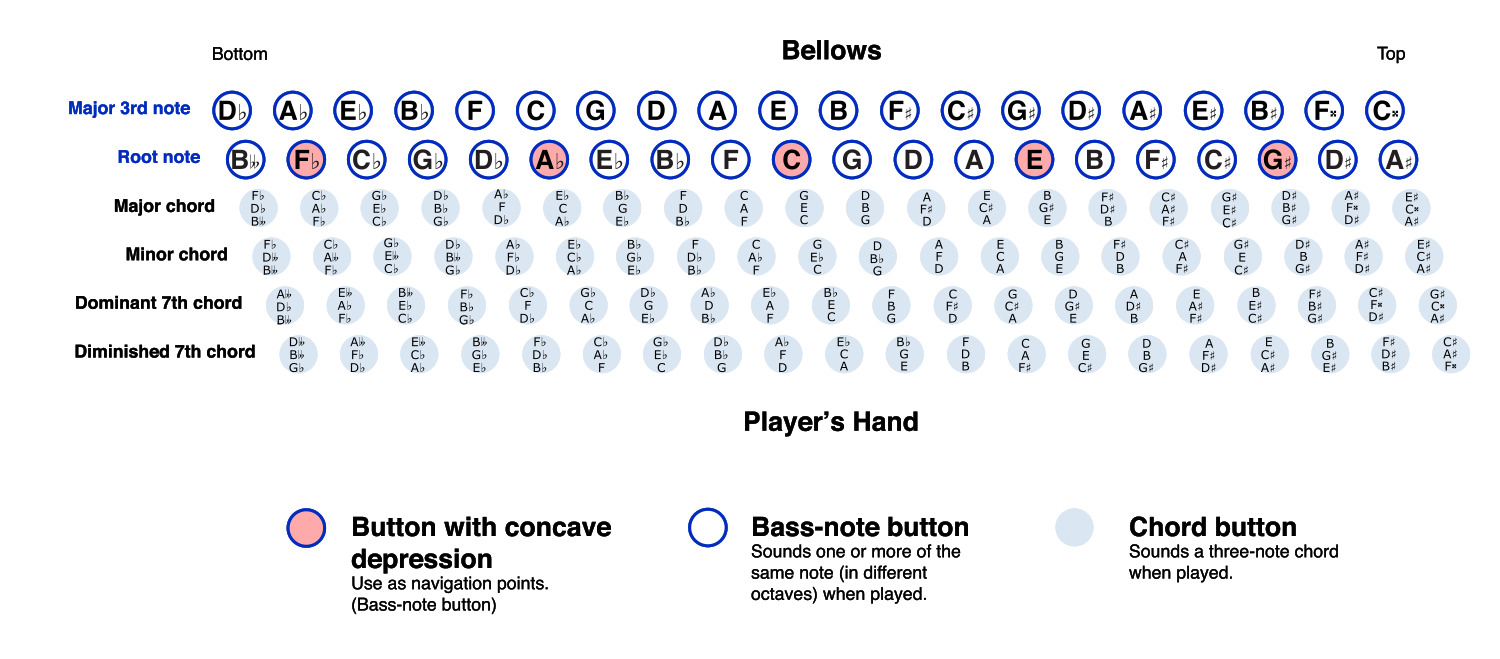Minor 7th Chords

Above image from https://en.wikipedia.org/wiki/Stradella_bass_system
The Stradella bass accordion can play a lot of chord types, but many are not all that obvious. In this article we will discuss the “minor 7th chord”. These are notated as “m7”(note the lower case “m”.
You can think of a m7 as a minor chord (Cm is C, Eb and G) with an added dominant 7th or as a Major 7th with a flat third. So, a Cm7 chord would be C, Eb, G and Bb (see the article:
for details). Which way to think about this chord (M7 with flat 3, or m with added 7th) really depends on the content of the particular piece of music you are playing.
Either way, we have a bit of a problem on Stradella which has no single button assigned to a minor seventh. Solutions?
- Simply ignore the 7th and play this chord as a minor chord. This works, but it's probably not why you are reading this article.
- It is pretty easy to add the 7th to any chord by adding it manually (or should that be digitally?). The 7th note is the bass button two columns down ... just use your fourth finger to make it happen.
- Play a major chord based on the flat 3rd. So, for Cm7, this would be Eb(major). To make it sound more complete, add the root note (C) back in (it is the counterbass, one column down). It's the same note we would use for 6ths. Skeptical? Well, for a Cm7 chord we need the notes C, Eb, G and Bb. A Eb chord is Eb, G and Bb; the counterbass C completes the puzzle.
For a second example: Fm7 needs the notes F, Ab, C and Eb. The “flat third chord” is Ab (it's always the second note in the chord) ... so, we need a Ab major with the F added in the counterbass row.
- Finally, you may see a call for a minor chord with a major 7th. Notated as CmM7. This one is really simple since you just follow the major7 rule for adding the M7 using the counterbass one column up and the minor chord button.
Please, in order to understand this, work though some examples with the chart at the top of this page for reference.
 |
This page was last modified on 2024-08-16 |